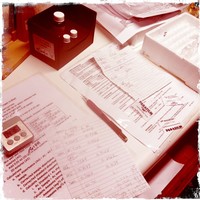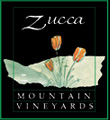Our Newsletter
Stay up to date with what we are working on, talking about and exploring. From grapes, wine, travel and fun!
If you would like to receive an email when we add a new newsletter, contact gary@zuccawines.com
La Riocha - Haro
Gary's comments
Our last two newsletters commented on our ventures to Priorat, the wine region north of Valencia. We first stayed in Tarragona, on the Mediterranean coast and took day trips to the wineries. On the second trip we stayed in the small village of Vilella Baixa and either walked or took a taxi to the wineries. This trip we decided to revisit La Rioja, the only Spanish wine region other than Priorat that can use the DOC classification. Located in the Ebro river valley to the northwest of Priorat and south of the Atlantic coast city of Bilbao, the Rioja wine region is much larger than Priorat and has several very large distributors. We were drawn to this region for a couple of reasons. First, we have fond memories of the area from previous visits on our wine club tours. Second, our go-to-everyday wine, Cune, is produced in Haro, the self-proclaimed capitol of Rioja.
The trip
Our favorite way to travel in Europe is by train. The train system in Spain is great if you want to travel to cities along the Mediterranean coast or from Madrid to almost anywhere. However, if you want to go from Valencia to a place across the country like Rioja it is way more complicated and takes way more time. For this reason we took a plane to Bilbao, a city on Spain's Gulf of Biscay coast, and a train from Bilbao to Haro. Between taxis to airports and train stations and waiting for planes and trains, it was about an 8-hour trip. When we arrived in Haro about five PM, we expected to take a taxi from the train station to our Airbnb. We were very surprised to find that the train station was closed, and we were the only people on the platform. Actually, we were the only people anywhere in sight. The train station is right in the middle of the industrial area where the wineries are, and everything was closed for the day. We checked with our travel advisor, Señor Google, and found that our hotel was only about a mile away on the other side of the Ebro river. So we started towing our suitcases down the road. We got about 200 yards (0.18 km) when a guy driving a carryall stopped by and asked where we were going. Turns out he was a local winery owner on his way home. He gave us a ride to our hotel and a tour of his winery the next day. What a great reception after a lousy trip!
The city
Haro is a small city that isn't afraid to make fun of itself by claiming the title of the CAPITAL DEL RIOJA, the largest and most prestigious wine region in Spain. Below are a couple of images that might illustrate my point. The top one is a mural of some guys who have probably had a bit too much wine while two women studiously ignore them. Below that is a wall depicting a huge wine bota fight.
What is dry?
I have a number of customers who come into our tasting room tell me that they find some of the wines to be dry. My usual response is “I see, or “oh” because, unless they are referring to our Syrah Port or Tesoro, all of our wines are dry. What I these customers are telling me is that the wines have a drying effect in their mouth. Not wanting to be a wine geek, I don’t go into my lecture of the difference between dryness, a measure of sweetness and astringency, a measure of tannin.
Sweetness is a measure of taste. A dry wine is a wine that has no (or <.5%) residual sugar (RS); an off-dry wine has about 1%, RS; and a sweet wine has >2% RS. Our Syrah Port has about 6% RS.
Astringency is not a measure of taste; it is measure of how the wine feels in the mouth. According to Marian Baldy in the University Wine Course, “…young red wines with high tannin levels are astringent and create a rough sensation: their tannins react with proteins in our saliva and on the surfaces of the cells lining our mouths and on the surfaces of our tongues to dry them out and create a puckery, rough sensation as our now-unlubricated mouth parts chafe against each other. Moderate astringency can nicely offset the richness of a fatty meal, but higher levels make wines unpalatable and call for patience: during bottle aging the astringency will diminish (Baldy, p.25).”
Coffee and tea also have high levels of tannin. That’s why lots of people reduce the tannin effect by adding a bit of milk, that has fat and protein, to their coffee or tea.
____________________________________________________________________
The University Wine Course: A wine appreciation text & self tutorial. (1997). Baldy, M. W. The Wine Appreciation Guild.
Nitrogen testing, another way to look at the grapes

Recent Posts
-
August 21, 2023
-
August 19, 2015
-
February 5, 2015
-
January 12, 2015
-
January 2, 2015
-
September 22, 2014
-
March 13, 2014
-
April 29, 2013
-
March 13, 2013
-
February 28, 2013
